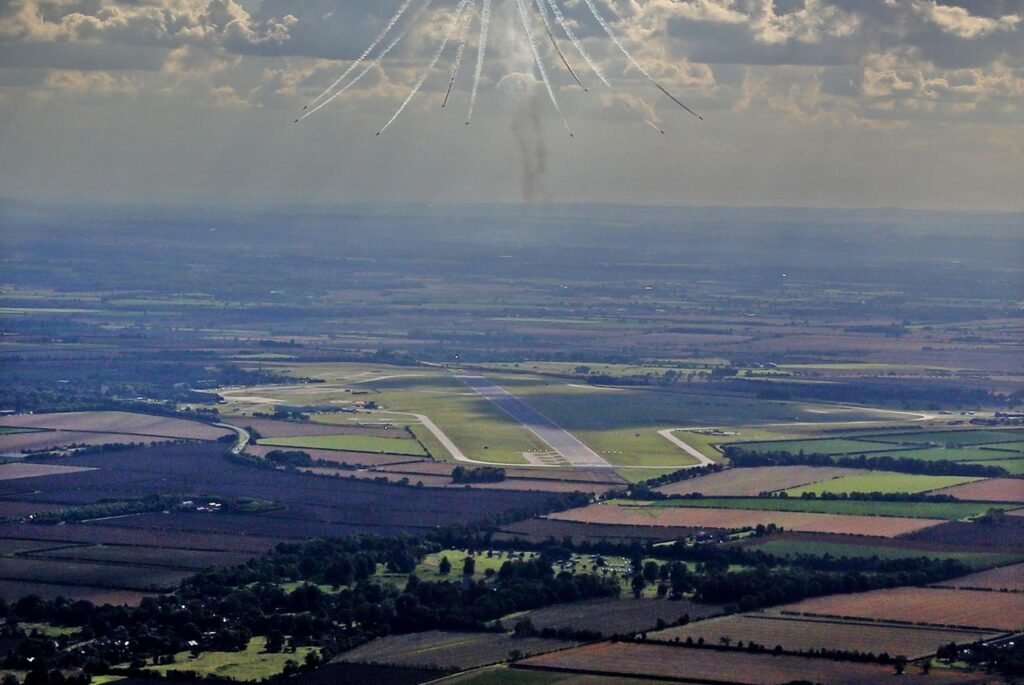Scampton Holdings Ltd (SHL) are pressing on with plans to preserve, protect and enhance the 800-acre historic site of RAF Scampton.
The site preservation plan will move forward, despite speculation last week that the Home Office was considering the site for its suitability to accommodate asylum seekers.
Cllr Owen Bierley, Leader of West Lindsey District Council has firmly advised the Home Office that the site would not be suitable and is urging the Government to remove RAF Scampton from its list of proposed asylum accommodation locations.
He said: “The idea that RAF Scampton is even being considered gives me significant cause for concern.”
“Given that the site has poor public transport connectivity and is remote in nature to services, we consider that this site is not suitable for the accommodation of asylum seekers”.
Planning authority approval
The local planning authority of West Lindsey District Council, the final decision makers on redevelopment of the site, have approved and given their full support to Scampton Holdings Ltd and West Lindsey District Council’s proposed plans to secure over £300 million of investment into the regeneration of the site.

These plans will preserve, protect and enhance the site by providing aviation heritage, business, aerospace, space and aviation technology and education opportunities.
Pressing on with the landmark deal, West Lindsey District Council will purchase the former RAF Scampton site from the Ministry of Defence.
And in a back-to-back arrangement the Council will transfer ownership to its new development partner, Scampton Holdings Ltd.
[monsterinsights_popular_posts_inline]
Chairman of Scampton Holdings Limited, Peter Hewitt said: “Scampton Holdings Limited are passionate about unlocking the future potential of this key site.”
“We bring to the table a wealth of experience and knowledge across the aerospace, defence, aviation, heritage and hospitality sectors.”
Mr Hewitt said the redevelopment “will create 1000’s of jobs at Scampton and supporting sectors in the surrounding economy.”
Principles of the redevelopment
Scampton Holdings Limited have developed a number of guiding principles which include;
- The protection, promotion and enhancement of existing heritage assets at Scampton;
- Supporting and improving existing community facilities;
- Maintaining Scampton as an operational and licensed airfield. Including retention of the restricted airspace status;
- Ensuring there is a ‘whole site’ approach towards being carbon neutral;
- Maintaining the site as one whole entity or campus; and
- Developing a strong tourism and hospitality offering which is additive to the existing visitor economy for Lincolnshire.
History of RAF Scampton
RAF Scampton is a Royal Air Force station located in Lincolnshire, England. The airfield was opened in 1916 during World War I as a home for the Royal Flying Corps.
During World War II, the airfield played a significant role in the defense of the United Kingdom and served as a base for several famous squadrons, including the Dambusters of No. 617 Squadron.

After the war, RAF Scampton continued to be used for a variety of purposes, including as a base for strategic bombers during the Cold War.
It was also home to the Red Arrows aerobatic display team, which has been based there since 1983.

In recent years, RAF Scampton has undergone significant changes, with several squadrons and units being relocated to other bases. The station remains an important part of the history of the Royal Air Force and the wider aviation industry.
It has played a key role in the defense of the United Kingdom for over a century and has been the site of many significant events and developments in aviation technology.









